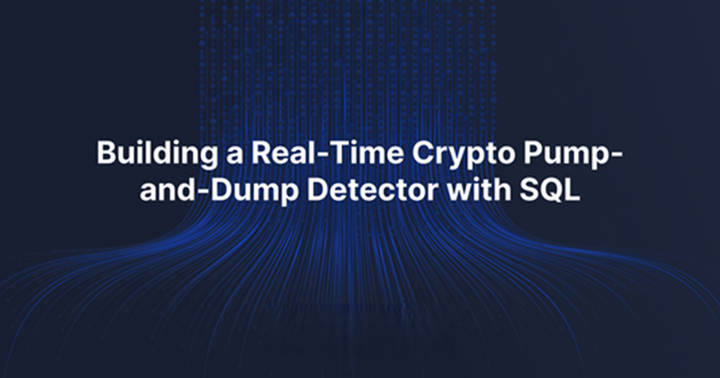Anchor开发Solana NFT
我们将在 Anchor/Rust 中创建一个 Solana 程序,使用 Solana Playground、QuickNode RPC 和 IPFS 服务直接在链上铸造 NFT,以存储与 NFT 相关的元数据和图像。

一键发币: x402兼容 | Aptos | X Layer | SUI | SOL | BNB | ETH | BASE | ARB | OP | Polygon | Avalanche
欢迎来到这个新教程。 今天,我们将在 Anchor/Rust 中创建一个 Solana 程序,使用 Solana Playground、QuickNode RPC 和 IPFS 服务直接在链上铸造 NFT,以存储与 NFT 相关的元数据和图像。
1、上传NFT图像到IPFS
作为第一步,我们将在去中心化存储服务中准备 NFT 图像和元数据。 我们将使用 QuickNode IPFS(一种高端 IPFS 存储服务)来满足需要快速、高度可用的访问和高级功能的解决方案。
让我们上传将成为我们的 NFT 的图像。 在 QuickNode 仪表板上,转到 IPFS,然后转到文件,然后可以删除图像。

让我们复制上传文件名称旁边出现的内容标识符 (CID)。 然后,我们将其附加到地址 fastnode.myfilebase.com/ipfs/ 以获得我们将在元数据中使用的 URL。 在浏览器中测试此 URL 以确保一切正确非常重要。
2、为NFT 创建元数据
为此,我们将基于 Metaplex 针对 Solana 上的 NFT 元数据创建的标准。 您可以访问 Metaplex 文档以获取更多信息。
我们的元数据将是一个 JSON 文件,其中包含我们将为 NFT 选择的参数、名称、符号和描述。
{
"name": "Name",
"symbol": "symbol",
"description": "your description",
"image": "quicknode.myfilebase.com/ipfs/CID",
"attributes": [
{
"trait_type": "type",
"value": "value"
}
],
"properties": {
"creators": [
{
"address": "creators's wallet address",
"share": royalty
}
],
"files": [
{
"type": "image/png",
"uri": "ipfs://CID"
}
]
},
"collection": {
"name": "name",
"family": "family"
}
}一旦我们的 .json 文件准备好,将返回 QuickNode 上的文件选项卡并像处理图像文件一样拖动它。 现在我们的文件已准备好继续。
3、设置 Solana Playground
我们将前往 Solana Playground 并通过创建新钱包进行连接。

单击显示 not connected 的位置,然后单击保存密钥对并继续。

在这里我们可以看到创建的钱包地址:

创建一个新项目,为其命名,然后选择 Anchor (Rust) 并创建:

注意:我们将需要来自 DevNet 的大约 10 个 Solana 来用于我们正在部署的合约。 为了给我们的钱包充值,我们必须输入我们刚刚在 Sol Faucet 中创建的地址钱包,它允许我们每 24 小时充值 3 个 Solana。 这意味着我们需要几天的时间才能完成这次充值。 作为替代方案,我们建议使用其他钱包地址和 VPN 来加快该过程。
现在是时候使用 QuickNode RPC 配置 solpg 以在 Solana DevNet 上工作了。 单击“设置”选项卡,然后单击“端点”选项卡。

选择自定义并粘贴适用于 Solana DevNet 的 QuickNode 私有 RPC。

完成此操作并返回到新创建的项目后,我们将删除不需要的代码,并保留主导入 from anchor_lang、程序 id 的默认声明以及程序和派生帐户属性的声明。
应该是这样的:
use anchor_lang::prelude::*;
declare_id!("11111111111111111111111111111111");
#[program]
#[derive(Accounts)]现在,我们将导入所有这些库和必要的元素。 这些库拥有在 Solana 上铸造新 NFT 所需的所有标准功能,在此过程中我们将需要它们中的每一个。
use anchor_spl::associated_token::AssociatedToken;
use anchor_spl::metadata::{
use create_master_edition_v3, create_metadata_accounts_v3, CreateMasterEditionV3,
CreateMetadataAccountsV3, Metadata,
};
use anchor_spl::token::{mint_to, Mint, MintTo, Token, TokenAccount};
use mpl_token_metadata::types::{Collection, Creator, DataV2};现在你的代码应该如下所示:
use anchor_lang::prelude::*;
use anchor_spl::associated_token::AssociatedToken;
use anchor_spl::metadata::{
create_master_edition_v3, create_metadata_accounts_v3, CreateMasterEditionV3,
CreateMetadataAccountsV3, Metadata,
};
use anchor_spl::token::{mint_to, Mint, MintTo, Token, TokenAccount};
use mpl_token_metadata::types::{Collection, Creator, DataV2};
declare_id!("11111111111111111111111111111111");
#[program]
#[derive(Accounts)]在 [derive(Accounts)] 属性下,我们将定义一个结构,其中包含与本程序交互所需的所有帐户。
我们将定义一个名为 CreateNFT 的公共结构。 它将有一个参数 info,表示在使用该结构作为上下文的指令执行期间它将保留在内存中。
我们将在结构中定义的第一个帐户将是 authority。 我们将其定义为具有 info 类型 生命周期的 Signer 类型的公共帐户。 我们在此结构中定义的所有帐户都将是公共类型并具有此生命周期。
#[derive(Accounts)]
pub struct CreateNFT<'info> {
pub authority: Signer<'info>,
}我们将为该帐户定义一个属性。 将以下行和表示可变的单词 mut 放在括号内。 这意味着NFT的授权未来可能会发生变化。
#[derive(Accounts)]
pub struct CreateNFT<'info> {
#[account(mut)]
pub authority: Signer<'info>,
}以同样的方式,我们将定义 payer帐户:
#[derive(Accounts)]
pub struct CreateNFT<'info> {
#[account(mut)]
pub authority: Signer<'info>,
#[account(mut)]
pub payer: Signer<'info>,
}现在我们声明 Account 类型的 mint 账户,它将带有 mint 类型的结构。 我们从 anchor_spl 库导入了这个结构。
#[derive(Accounts)]
pub struct CreateNFT<'info> {
#[account(mut)]
pub authority: Signer<'info>,
#[account(mut)]
pub payer: Signer<'info>,
pub mint: Account<'info, Mint>,
}我们的 mint账户将携带以下参数:
init:因为我们必须初始化它。payer帐户作为将支付初始化费用的帐户。- 内部
mint结构:小数点为 0,因为它是不可替代代币 (NFT) - 然后我们将
authority帐户作为铸币结构的权限传递。 freeze_authoroty参数也是如此。
#[derive(Accounts)]
pub struct CreateNFT<'info> {
#[account(mut)]
pub authority: Signer<'info>,
#[account(mut)]
pub payer: Signer<'info>,
#[account(
init,
payer = payer,
mint::decimals = 0,
mint::authority = authority,
mint::freeze_authority = authority,
)]
pub mint: Account<'info, Mint>,
}现在我们设置种子来创建派生地址,该地址将首先携带单词 mint(以字节为单位)和 id 参数(以字节为单位)。
#[derive(Accounts)]
pub struct CreateNFT<'info> {
#[account(mut)]
pub authority: Signer<'info>,
#[account(mut)]
pub payer: Signer<'info>,
#[account(
init,
payer = payer,
mint::decimals = 0,
mint::authority = authority,
mint::freeze_authority = authority,
seeds = ["mint".as_bytes(), id.to_le_bytes().as_ref()],
bump,
)]
pub mint: Account<'info, Mint>,
}我们将从合约中创建的指令中获取此 id 参数,该指令将在被调用以铸造 NFT 时接收该参数。 因此,我们必须声明这个属性,它将通过以下方式从这条指令中获取。
#[derive(Accounts)]
#[instruction(id: u64)]
pub struct CreateNFT<'info> {
#[account(mut)]
pub authority: Signer<'info>,
#[account(mut)]
pub payer: Signer<'info>,
#[account(
init,
payer = payer,
mint::decimals = 0,
mint::authority = authority,
mint::freeze_authority = authority,
seeds = ["mint".as_bytes(), id.to_le_bytes().as_ref()],
bump,
)]
pub mint: Account<'info, Mint>,
}现在我们将创建 token_account,它将携带 token 帐户类型的结构,允许我们将铸造帐户与将接收铸造的 NFT 的帐户关联起来。
#[derive(Accounts)]
#[instruction(id: u64)]
pub struct CreateNFT<'info> {
#[account(mut)]
pub authority: Signer<'info>,
#[account(mut)]
pub payer: Signer<'info>,
#[account(
init,
payer = payer,
mint::decimals = 0,
mint::authority = authority,
mint::freeze_authority = authority,
seeds = ["mint".as_bytes(), id.to_le_bytes().as_ref()],
bump,
)]
pub mint: Account<'info, Mint>,
pub token_account: Account<'info, TokenAccount>,
}它的参数将为 init_if_needed,即如果不存在则创建一个新帐户。 我们将发送付款人作为我们的付款人帐户。 对于 associated_token结构中存在的铸币参数,我们将发送铸币账户和付款人账户作为授权。
#[derive(Accounts)]
#[instruction(id: u64)]
pub struct CreateNFT<'info> {
#[account(mut)]
pub authority: Signer<'info>,
#[account(mut)]
pub payer: Signer<'info>,
#[account(
init,
payer = payer,
mint::decimals = 0,
mint::authority = authority,
mint::freeze_authority = authority,
seeds = ["mint".as_bytes(), id.to_le_bytes().as_ref()],
bump,
)]
pub mint: Account<'info, Mint>,
#[account(
init_if_needed,
payer = payer,
associated_token::mint = mint,
associated_token::authority = payer,
)]
pub token_account: Account<'info, TokenAccount>,
}现在我们声明该过程所需的以下帐户:
associated_token_program:关联帐户的Anchor SPL 库程序。rent:Sysvar 类型的程序,有助于确定租金成本。system_program:Solana 的主程序。token_program:允许在 Solana 上创建代币的程序。metadata_program:用于根据 Metaplex 标准将元数据关联到帐户的程序。
#[derive(Accounts)]
#[instruction(id: u64)]
pub struct CreateNFT<'info> {
#[account(mut)]
pub authority: Signer<'info>,
#[account(mut)]
pub payer: Signer<'info>,
#[account(
init,
payer = payer,
mint::decimals = 0,
mint::authority = authority,
mint::freeze_authority = authority,
seeds = ["mint".as_bytes(), id.to_le_bytes().as_ref()],
bump,
)]
pub mint: Account<'info, Mint>,
#[account(
init_if_needed,
payer = payer,
associated_token::mint = mint,
associated_token::authority = payer,
)]
pub token_account: Account<'info, TokenAccount>,
pub associated_token_program: Program<'info, AssociatedToken>,
pub rent: Sysvar<'info, Rent>,
pub system_program: Program<'info, System>,
pub token_program: Program<'info, Token>,
pub metadata_program: Program<'info, Metadata>,
}最后,我们声明 UncheckedAccount、 master_edition_account 和 nft_metadata 类型的帐户。 我们还必须添加带有 ///CHECK 一词的行,以通知编译器我们正在使用未经检查的帐户类型。
#[derive(Accounts)]
#[instruction(id: u64)]
pub struct CreateNFT<'info> {
#[account(mut)]
pub authority: Signer<'info>,
#[account(mut)]
pub payer: Signer<'info>,
#[account(
init,
payer = payer,
mint::decimals = 0,
mint::authority = authority,
mint::freeze_authority = authority,
seeds = ["mint".as_bytes(), id.to_le_bytes().as_ref()],
bump,
)]
pub mint: Account<'info, Mint>,
#[account(
init_if_needed,
payer = payer,
associated_token::mint = mint,
associated_token::authority = payer,
)]
pub token_account: Account<'info, TokenAccount>,
pub associated_token_program: Program<'info, AssociatedToken>,
pub rent: Sysvar<'info, Rent>,
pub system_program: Program<'info, System>,
pub token_program: Program<'info, Token>,
pub metadata_program: Program<'info, Metadata>,
/// CHECK:
pub master_edition_account: UncheckedAccount<'info>,
/// CHECK:
pub nft_metadata: UncheckedAccount<'info>,
}master_edition_account 是必要的,可以通过将 Solana 网络上的代币与主版账户关联来确保其有效地不可替代。 通过它可以创建更多的代币信息实例,所有实例都与这个唯一的帐户相关联,以创建不同类型的 NFT。
我们将为该帐户定义以下参数:
- Mutable:它的种子将按照文档的要求准确定义如下。
- Bump:我们必须放置此行,因为此 PDA 帐户将由元数据程序生成。
#[derive(Accounts)]
#[instruction(id: u64)]
pub struct CreateNFT<'info> {
#[account(mut)]
pub authority: Signer<'info>,
#[account(mut)]
pub payer: Signer<'info>,
#[account(
init,
payer = payer,
mint::decimals = 0,
mint::authority = authority,
mint::freeze_authority = authority,
seeds = ["mint".as_bytes(), id.to_le_bytes().as_ref()],
bump,
)]
pub mint: Account<'info, Mint>,
#[account(
init_if_needed,
payer = payer,
associated_token::mint = mint,
associated_token::authority = payer,
)]
pub token_account: Account<'info, TokenAccount>,
pub associated_token_program: Program<'info, AssociatedToken>,
pub rent: Sysvar<'info, Rent>,
pub system_program: Program<'info, System>,
pub token_program: Program<'info, Token>,
pub metadata_program: Program<'info, Metadata>,
#[account(
mut,
seeds = [
b"metadata".as_ref(),
metadata_program.key().as_ref(),
mint.key().as_ref(),
b"edition".as_ref(),
],
bump,
seeds::program = metadata_program.key()
)]
/// CHECK:
pub master_edition_account: UncheckedAccount<'info>,
/// CHECK:
pub nft_metadata: UncheckedAccount<'info>,
}对于 nft_metadata 帐户,我们将设置以下参数,其方式与我们对 master_edition_account 的设置非常相似。
#[derive(Accounts)]
#[instruction(id: u64)]
pub struct CreateNFT<'info> {
#[account(mut)]
pub authority: Signer<'info>,
#[account(mut)]
pub payer: Signer<'info>,
#[account(
init,
payer = payer,
mint::decimals = 0,
mint::authority = authority,
mint::freeze_authority = authority,
seeds = ["mint".as_bytes(), id.to_le_bytes().as_ref()],
bump,
)]
pub mint: Account<'info, Mint>,
#[account(
init_if_needed,
payer = payer,
associated_token::mint = mint,
associated_token::authority = payer,
)]
pub token_account: Account<'info, TokenAccount>,
pub associated_token_program: Program<'info, AssociatedToken>,
pub rent: Sysvar<'info, Rent>,
pub system_program: Program<'info, System>,
pub token_program: Program<'info, Token>,
pub metadata_program: Program<'info, Metadata>,
#[account(
mut,
seeds = [
b"metadata".as_ref(),
metadata_program.key().as_ref(),
mint.key().as_ref(),
b"edition".as_ref(),
],
bump,
seeds::program = metadata_program.key()
)]
/// CHECK:
pub master_edition_account: UncheckedAccount<'info>,
#[account(
mut,
seeds = [
b"metadata".as_ref(),
metadata_program.key().as_ref(),
mint.key().as_ref(),
],
bump,
seeds::program = metadata_program.key()
)]
/// CHECK:
pub nft_metadata: UncheckedAccount<'info>,
}准备好 CreateNFT 结构后,我们将开始创建我们的程序。 在program属性下,我们创建公共模块 nft_program。
#[program]
pub mod nft_program {}我们使用以下指令导入整个父模块:
#[program]
pub mod nft_program {
use super::*;
}我们将通过以下方式创建公共函数 create_single_nft:
#[program]
pub mod nft_program {
use super::*;
pub fn create_single_nft() -> Result<()> {
}然后我们将指定函数将接收的参数:
- Context:我们将把我们在创建 NFT 结构中创建的所有帐户带到这里。
- NFT ID
- Name
- Symbol
- URI
- Price
- Quantity
#[program]
pub mod nft_program {
use super::*;
pub fn create_single_nft(
ctx: Context<CreateNFT>,
id: u64,
name: String,
symbol: String,
uri: String,
price: f32,
cant: u64,
) -> Result<()> {
}我们的函数将按此特定顺序调用以下 3 个函数:
- 我们从
anchor_spl导入的mint_to函数 create_metadata_accounts_v3- 来自
anchor_spl元数据库的create_master_edition_v3。
#[program]
pub mod nft_program {
use super::*;
pub fn create_single_nft(
ctx: Context<CreateNFT>,
id: u64,
name: String,
symbol: String,
uri: String,
price: f32,
cant: u64,
) -> Result<()> {
mint_to()?;
create_metadata_accounts_v3()?;
create_master_edition_v3()?;
}如果我们查看 mint_to 函数的 Rust 文档,会看到它接收一个 CpiContext,其中有一个在同一库中定义的 mint_to 结构类型和一个数量。

CpiContext 用于我们的程序与网络上的其他程序交互。 该上下文必须通过 new_with_signer() 函数定义,因为它将需要种子来签署交易。
mint_to(
CpiContext::new_with_signer(
ctx.accounts.token_program.to_account_info(),
MintTo {
authority: ctx.accounts.authority.to_account_info(),
to: ctx.accounts.token_account.to_account_info(),
mint: ctx.accounts.mint.to_account_info(),
&[&seeds[..]],
),new_with_signer()函数接收我们将与之交互的程序。 该程序已在我们的 CreateNFT 结构中定义,因此我们通过上下文 ctx.account 代币程序访问它,并使用 to_account_info() 函数读取其地址。 这是 Solana 上的代币创建程序。
用于创建 CpiContext 的 new_with_signer() 函数的下一个参数将是 MintTo 账户数组。 这将包含:
authority,它也在我们的上下文中定义,我们通过ctx.account_authority访问它,并将其转换为帐户信息。to,它是将接收 NFT 的账户,这将是与钱包付款人的代币铸币账户相关联的账户,或者是支付交易的账户。mint,代币在网络上的身份。
所有这些帐户都来自我们已经创建的上下文。
最后,该函数将接收将形成种子的字节列表。
该种子必须之前通过以下方式声明:
- 我们将作为参数接收到的 id 转换为字节
id_bytes = id.to_le_bytes - 然后,我们将
seeds声明为一个数组,该数组首先将字符串mint转换为字节。 - 我们的
id_bytes变量转换为引用,并且从我们的上下文中动态获取并以这种方式引用mint帐户的bump。
这将是签署以下所有函数调用的种子:
) -> Result<()> {
let id_bytes = id.to_le_bytes();
let seeds = &["mint".as_bytes(),id_bytes.as_ref(),&[ctx.bumps.mint],
];
mint_to(
CpiContext::new_with_signer(
ctx.accounts.token_program.to_account_info(),
MintTo {
authority: ctx.accounts.authority.to_account_info(),
to: ctx.accounts.token_account.to_account_info(),
mint: ctx.accounts.mint.to_account_info(),
&[&seeds[..]],
),现在让我们构建对 create_metadata_accounts_v3 函数的调用。 这次,参数将是:
- 再次使用
new_with_signer()函数创建CpiContext。 DataV2结构。- 我们将发送两个布尔值
true,第一个将权限帐户设置为同一签名者,第二个使元数据可变。 - 最后,
none一词代表集合详细信息。
我们将首先使用上下文中的元数据程序帐户构建 CpiContext。 这将是我们在此函数中与之交互的程序。
然后,我们将发送 CreateMetadataAccountsV3 结构。 具有以下参数,全部从我们的 CreateNFT 结构中获得:
payermint账户,- NFT
metadata账户 - 与权限账户一起的铸造和更新权限
system_program也可在上下文中使用rent
最后,该函数将接收我们已经创建并可用的种子。
create_metadata_accounts_v3(
CpiContext::new_with_signer(
ctx.accounts.metadata_program.to_account_info(),
CreateMetadataAccountsV3 {
payer: ctx.accounts.payer.to_account_info(),
mint: ctx.accounts.mint.to_account_info(),
metadata: ctx.accounts.nft_metadata.to_account_info(),
mint_authority: ctx.accounts.authority.to_account_info(),
update_authority: ctx.accounts.authority.to_account_info(),
system_program: ctx.accounts.system_program.to_account_info(),
rent: ctx.accounts.rent.to_account_info(),
},
&[&seeds[..]],我们仍然需要填写 DataV2 结构的参数,即:
name、symbol和URI所有这些都将作为create_single_nft函数的参数seller_fee_basis_points参数值为 0- 参数
creaetor、collection、user均设置为none。
我们将放置正在执行创建元数据帐户功能的消息 msg,我们的代码将如下所示:
msg!("Run create metadata accounts v3");
create_metadata_accounts_v3(
CpiContext::new_with_signer(
ctx.accounts.metadata_program.to_account_info(),
CreateMetadataAccountsV3 {
payer: ctx.accounts.payer.to_account_info(),
mint: ctx.accounts.mint.to_account_info(),
metadata: ctx.accounts.nft_metadata.to_account_info(),
mint_authority: ctx.accounts.authority.to_account_info(),
update_authority: ctx.accounts.authority.to_account_info(),
system_program: ctx.accounts.system_program.to_account_info(),
rent: ctx.accounts.rent.to_account_info(),
},
&[&seeds[..]],
),
DataV2 {
name,
symbol,
uri,
seller_fee_basis_points: 0,
creators: None,
collection: None,
uses: None,
},
true,
true,
None,
)?;我们还将以相同的方式调用 create_master_edition_v3 函数,使用 new_with_signer() 函数创建的 CpiContext,最大供应量为 1,如下所示 some(1)。
new_with_signer() 函数接收元数据程序作为程序,这是一个 CreateMetadataAccountsV3 结构,其中包含来自上下文的所有这些帐户:
edition账户、作为付款人的payer账户、mint账户、具有代币metadata的账户。mint_authority、update_authority、system_program、token_program和rent。- 最后,我们放置
seeds进行签名。 我们将放置消息msg执行创建主版本功能,并在最后放置消息msgNFT 已成功创建,然后我们通过 ok 完成该功能。
我们的代码如下所示:
msg!("Run create master edition v3");
create_master_edition_v3(
CpiContext::new_with_signer(
ctx.accounts.metadata_program.to_account_info(),
CreateMasterEditionV3 {
edition: ctx.accounts.master_edition_account.to_account_info(),
payer: ctx.accounts.payer.to_account_info(),
mint: ctx.accounts.mint.to_account_info(),
metadata: ctx.accounts.nft_metadata.to_account_info(),
mint_authority: ctx.accounts.authority.to_account_info(),
update_authority: ctx.accounts.authority.to_account_info(),
system_program: ctx.accounts.system_program.to_account_info(),
token_program: ctx.accounts.token_program.to_account_info(),
rent: ctx.accounts.rent.to_account_info(),
},
&[&seeds[..]],
),
Some(1),
)?;
msg!("Minted NFT successfully");
Ok(())
}这将是整个代码:
use anchor_lang::prelude::*;
use anchor_spl::associated_token::AssociatedToken;
use anchor_spl::metadata::{
create_master_edition_v3, create_metadata_accounts_v3, CreateMasterEditionV3,
CreateMetadataAccountsV3, Metadata,
};
use anchor_spl::token::{mint_to, Mint, MintTo, Token, TokenAccount};
use mpl_token_metadata::types::{Collection, Creator, DataV2};
declare_id!("nuvdhmYq5Z2Eg4nBi29Tu2VcbpE9nuiCQ68rkyAB3A1");
#[program]
pub mod nft_program {
use super::*;
pub fn create_single_nft(
ctx: Context<CreateNFT>,
id: u64,
name: String,
symbol: String,
uri: String,
price: f32,
cant: u64,
) -> Result<()> {
msg!("Creating seeds");
let id_bytes = id.to_le_bytes();
let seeds = &["mint".as_bytes(),id_bytes.as_ref(),&[ctx.bumps.mint],
];
msg!("Run mint_to");
mint_to(
CpiContext::new_with_signer(
ctx.accounts.token_program.to_account_info(),
MintTo {
authority: ctx.accounts.authority.to_account_info(),
to: ctx.accounts.token_account.to_account_info(),
mint: ctx.accounts.mint.to_account_info(),
},
&[&seeds[..]],
),
1, // 1 token
)?;
msg!("Run create metadata accounts v3");
create_metadata_accounts_v3(
CpiContext::new_with_signer(
ctx.accounts.metadata_program.to_account_info(),
CreateMetadataAccountsV3 {
payer: ctx.accounts.payer.to_account_info(),
mint: ctx.accounts.mint.to_account_info(),
metadata: ctx.accounts.nft_metadata.to_account_info(),
mint_authority: ctx.accounts.authority.to_account_info(),
update_authority: ctx.accounts.authority.to_account_info(),
system_program: ctx.accounts.system_program.to_account_info(),
rent: ctx.accounts.rent.to_account_info(),
},
&[&seeds[..]],
),
DataV2 {
name,
symbol,
uri,
seller_fee_basis_points: 0,
creators: None,
collection: None,
uses: None,
},
true,
true,
None,
)?;
msg!("Run create master edition v3");
create_master_edition_v3(
CpiContext::new_with_signer(
ctx.accounts.metadata_program.to_account_info(),
CreateMasterEditionV3 {
edition: ctx.accounts.master_edition_account.to_account_info(),
payer: ctx.accounts.payer.to_account_info(),
mint: ctx.accounts.mint.to_account_info(),
metadata: ctx.accounts.nft_metadata.to_account_info(),
mint_authority: ctx.accounts.authority.to_account_info(),
update_authority: ctx.accounts.authority.to_account_info(),
system_program: ctx.accounts.system_program.to_account_info(),
token_program: ctx.accounts.token_program.to_account_info(),
rent: ctx.accounts.rent.to_account_info(),
},
&[&seeds[..]],
),
Some(1),
)?;
msg!("Minted NFT successfully");
Ok(())
}
pub fn mint_to_collection(
ctx: Context<MintToCollection>,
id_collection: u64,
id_nft: u64,
name: String,
symbol: String,
uri: String,
price: f32,
cant: u64,
) -> Result<()> {
msg!("Creating seeds");
let id_bytes = id_collection.to_le_bytes();
let id_nft_bytes = id_nft.to_le_bytes();
let seeds = &[
"mint".as_bytes(),
id_bytes.as_ref(),
id_nft_bytes.as_ref(),
&[ctx.bumps.mint],
];
msg!("Run mint_to");
mint_to(
CpiContext::new_with_signer(
ctx.accounts.token_program.to_account_info(),
MintTo {
authority: ctx.accounts.authority.to_account_info(),
to: ctx.accounts.token_account.to_account_info(),
mint: ctx.accounts.mint.to_account_info(),
},
&[&seeds[..]],
),
1, // 1 token
)?;
msg!("Run create metadata accounts v3");
create_metadata_accounts_v3(
CpiContext::new_with_signer(
ctx.accounts.metadata_program.to_account_info(),
CreateMetadataAccountsV3 {
payer: ctx.accounts.payer.to_account_info(),
mint: ctx.accounts.mint.to_account_info(),
metadata: ctx.accounts.nft_metadata.to_account_info(),
mint_authority: ctx.accounts.authority.to_account_info(),
update_authority: ctx.accounts.authority.to_account_info(),
system_program: ctx.accounts.system_program.to_account_info(),
rent: ctx.accounts.rent.to_account_info(),
},
&[&seeds[..]],
),
DataV2 {
name,
symbol,
uri,
seller_fee_basis_points: 0,
creators: Some(vec![Creator {
address: ctx.accounts.payer.key(),
verified: true,
share: 100,
}]),
collection: Some(Collection {
key: ctx.accounts.collection.key(),
verified: false,
}),
uses: None,
},
true,
true,
None,
)?;
msg!("Run create master edition v3");
create_master_edition_v3(
CpiContext::new_with_signer(
ctx.accounts.metadata_program.to_account_info(),
CreateMasterEditionV3 {
edition: ctx.accounts.master_edition_account.to_account_info(),
payer: ctx.accounts.payer.to_account_info(),
mint: ctx.accounts.mint.to_account_info(),
metadata: ctx.accounts.nft_metadata.to_account_info(),
mint_authority: ctx.accounts.authority.to_account_info(),
update_authority: ctx.accounts.authority.to_account_info(),
system_program: ctx.accounts.system_program.to_account_info(),
token_program: ctx.accounts.token_program.to_account_info(),
rent: ctx.accounts.rent.to_account_info(),
},
&[&seeds[..]],
),
Some(1),
)?;
msg!("Minted NFT successfully");
Ok(())
}
}
#[derive(Accounts)]
#[instruction(id: u64)]
pub struct CreateNFT<'info> {
#[account(mut)]
pub authority: Signer<'info>,
#[account(mut)]
pub payer: Signer<'info>,
#[account(
init,
payer = payer,
mint::decimals = 0,
mint::authority = authority,
mint::freeze_authority = authority,
seeds = ["mint".as_bytes(), id.to_le_bytes().as_ref()],
bump,
)]
pub mint: Account<'info, Mint>,
#[account(
init_if_needed,
payer = payer,
associated_token::mint = mint,
associated_token::authority = payer,
)]
pub token_account: Account<'info, TokenAccount>,
pub associated_token_program: Program<'info, AssociatedToken>,
pub rent: Sysvar<'info, Rent>,
pub system_program: Program<'info, System>,
pub token_program: Program<'info, Token>,
pub metadata_program: Program<'info, Metadata>,
#[account(
mut,
seeds = [
b"metadata".as_ref(),
metadata_program.key().as_ref(),
mint.key().as_ref(),
b"edition".as_ref(),
],
bump,
seeds::program = metadata_program.key()
)]
/// CHECK:
pub master_edition_account: UncheckedAccount<'info>,
#[account(
mut,
seeds = [
b"metadata".as_ref(),
metadata_program.key().as_ref(),
mint.key().as_ref(),
],
bump,
seeds::program = metadata_program.key()
)]
/// CHECK:
pub nft_metadata: UncheckedAccount<'info>,
}
#[derive(Accounts)]
#[instruction(id_collection: u64, id_nft: u64)]
pub struct MintToCollection<'info> {
#[account(mut)]
pub authority: Signer<'info>,
#[account(mut)]
pub payer: Signer<'info>,
#[account(
init,
payer = payer,
mint::decimals = 0,
mint::authority = authority,
mint::freeze_authority = authority,
seeds = ["mint".as_bytes(),
id_collection.to_le_bytes().as_ref(),
id_nft.to_le_bytes().as_ref()],
bump,
)]
pub mint: Account<'info, Mint>,
#[account(
init_if_needed,
payer = payer,
associated_token::mint = mint,
associated_token::authority = payer,
)]
pub token_account: Account<'info, TokenAccount>,
pub associated_token_program: Program<'info, AssociatedToken>,
pub rent: Sysvar<'info, Rent>,
pub system_program: Program<'info, System>,
pub token_program: Program<'info, Token>,
pub metadata_program: Program<'info, Metadata>,
#[account(
mut,
seeds = [
b"metadata".as_ref(),
metadata_program.key().as_ref(),
mint.key().as_ref(),
b"edition".as_ref(),
],
bump,
seeds::program = metadata_program.key()
)]
/// CHECK:
pub master_edition_account: UncheckedAccount<'info>,
#[account(
mut,
seeds = [
b"metadata".as_ref(),
metadata_program.key().as_ref(),
mint.key().as_ref(),
],
bump,
seeds::program = metadata_program.key()
)]
/// CHECK:
pub nft_metadata: UncheckedAccount<'info>,
/// CHECK:
pub collection: UncheckedAccount<'info>,
}
我们将在终端中执行Build并得到结果“Build Success”。
现在我们使用 Deploy 来部署我们的程序,并完成此过程。
我们现在准备测试我们的程序。

原文链接:Create your own on-chain NFTs on Solana with Anchor and QuickNode: a step-by-step guide 2024
DefiPlot翻译整理,转载请标明出处
免责声明:本站资源仅用于学习目的,也不应被视为投资建议,读者在采取任何行动之前应自行研究并对自己的决定承担全部责任。


